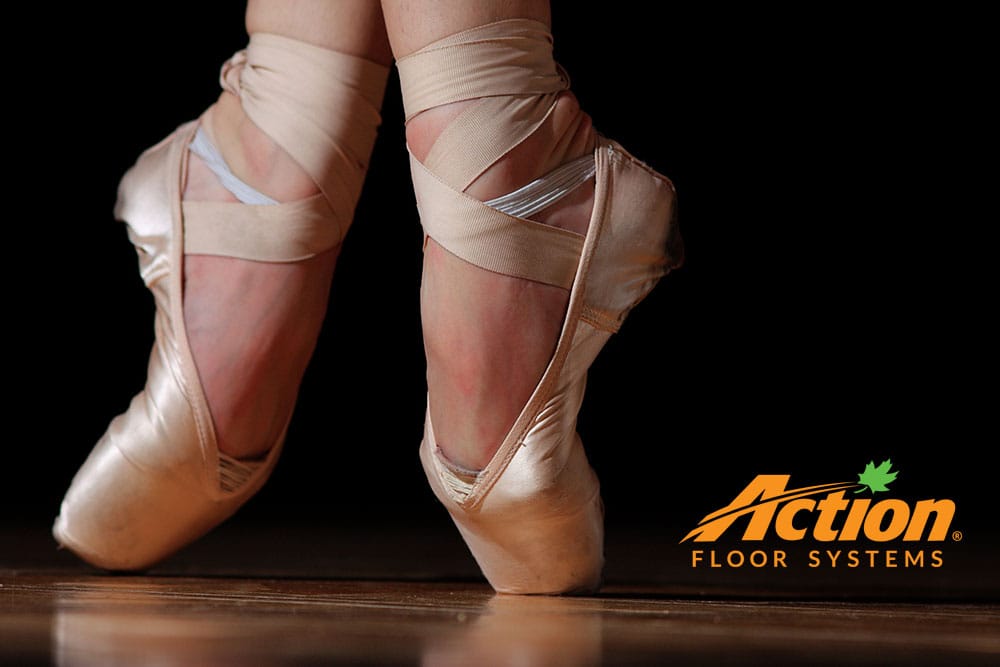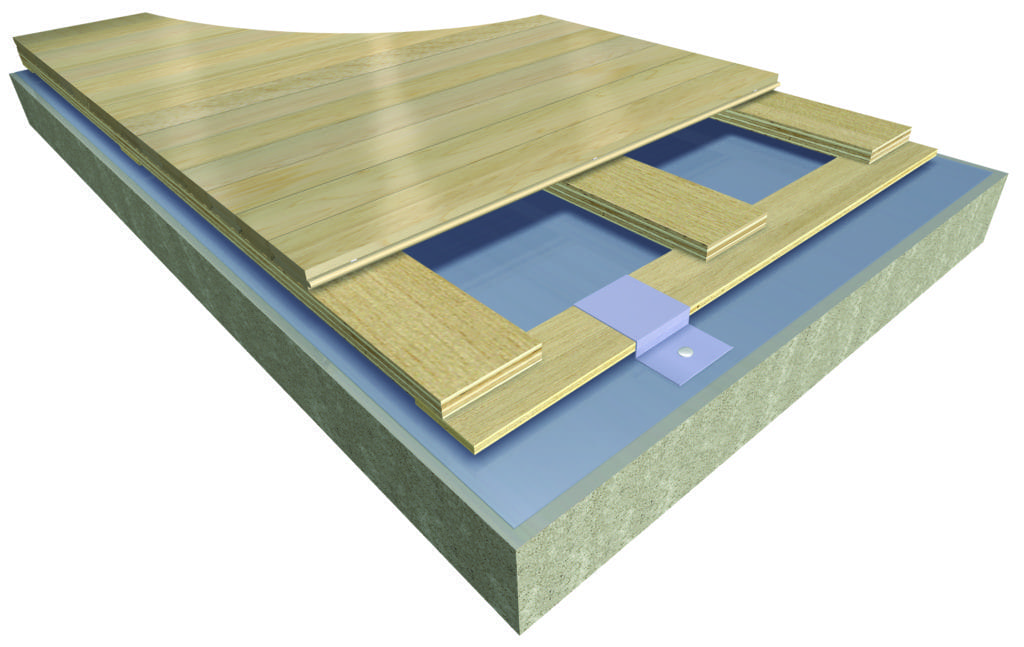
The worlds of basketball and dance may seem far removed, but when it comes to the floors that dancers and players use, the floor system needs to provide many comparable athletic or performance features. While we tend to think of dancers as performance artists and basketball players as athletes, the truth is both of these groups are athletes and performers.
“The term ‘dance floor’ ends up being a bit of a misnomer,” explains Action Floor Systems® Vice President of Sales, Ron Fenhaus. “The people using a dance floor system are athletes, and what works for a basketball athlete can also benefit a dance athlete.”
Spend a few minutes watching a modern or contemporary dancer practice and you’ll see how much athleticism is required. Even an episode of Dancing with the Stars shows you that competitive ballroom dancing is physically taxing on the participants.
Choosing the right maple dance floor system or vinyl dance floor system for your client is no simple task. Understanding the different end-users is the first step towards picking the right system and surface when putting together project specifications for a dance studio or theatrical stage.
Five Important Attributes of Dance Floor Systems
There are differences in what matters in a basketball floor system compared to a performance dance floor application. Obviously, ball bounce/response is of no importance to dancers. While shock absorption, area of deflection, and system (vertical) deflection are features that are priorities in a dance floor system as the floor systems overall uniformity reassures the performer.
The ideal floor system is typically called a sprung floor system. It’s a term that emerged decades ago as some flooring manufacturers used metal springs in the subfloor system to provide shock absorption and resilience. Today, the term sprung floor simply implies a padded floor, that provides superior shock absorption.
The American National Standards Institute (ANSI) and the Professional Lighting and Sound Association (PLASA) do have standard, recommended testing methods for floors used in live performances, which are derivatives of DIN 18032 Part 2 Performance Criteria. Click here to view a PDF of those methods and values from PLASA.
The following attributes are common terms in sports flooring, but let’s look at how they relate to dance activities.
1. Shock Absorption
Protecting the bodies of dancers who use the surface will be on the mind of any client looking for a new dance floor system. Good shock absorption will be easier on the joints of performers, but the amount of shock absorption desired will vary depending on the type of dance being performed and the level of athlete using the facility or stage.
Identifying the right amount of shock absorption (or force reduction) will be a key step in helping your client choose a dance floor system. You’re likely to get different opinions based on the preferences of the end user.
2. Uniformity
Uniformity covers all performance aspects of a dance floor system and ensures it is the same throughout.
A uniform floor will provide dancers with proper stability and consistent shock absorption and deflection across the surface. A uniform floor systems helps dancers know what to expect each time they land when executing different moves. Both uniformity and shock absorption can help prevent injuries among dancers.
3. Area of Deflection
Area deflection involves the amount of energy transferred through the floor upon impact. It measures the surface area of the floor that’s deflected under impact. If two dancers are performing near each other, you want to avoid the possibility of disrupting them with vibration in the floor.
4. Deflection
Vertical deflection measures the floors downward movement when a dancer lands on the surface, and it is related to shock absorption.
5. Surface friction
Surface friction concerns the type of finish used on the surface of the floor system.
In general, dance floors should provide enough surface friction to avoid slipping while allowing for some slide. Too much surface friction can lead to injuries such as twisted ankles.
Practice vs. Performance
A sprung dance floor used for practice can be quite different than a performance surface, and it’s likely that your client will have certain preferences for one versus the other.
For example, dancers do a lot of repetitive movement during practice. So, comfort and safety will be a priority. That calls for a dance floor with good shock absorption and uniformity. However, a performance area such as a stage, uniformity may be more important, and the client may want a less resilient surface.
Concerning the look of the project, a hardwood maple dance floor will provide the most aesthetic appeal and warmth. Your clients may also want to consider the results different grades of maple will produce in their facility. Synthetic dance floors provide a more monotone appearance, which may be desirable for a stage setting.
Find the Right Dance Surface with Action Floors
Dance is a wide genre of performance art. You could be specifying a floor where middle-aged students are learning ballroom dancing, a studio where children are practicing, or an area where college students are bounding around and flipping through the air. That’s why we should reiterate that the most crucial part of this process is understanding your customers and learning their needs and desires.
Action Floors manufactures several hardwood maple and synthetic floor systems for dance and aerobic use, including the Action Aero Studio.
“Aero Studio, is a nice comfortable floor and a good dance floor all around. It delivers high levels of shock absorption as well as uniformity,” says Fenhaus.
However, it’s also important for architects and their clients to understand that even though a system may be labeled a sports floor and described in terms of activities like basketball, there are many attributes in these systems that are ideal for dance.
If you have clients with precise requirements for the dance surface they want, Action Floors can customize a floor system to meet their needs. We will help you specify the right floor system for your project and answer any questions you may have to guide you to the best decision.
Contact Action Floors today or give us a call at 800 746-3512 to find out more about how to specify the right dance floor for your project.


























